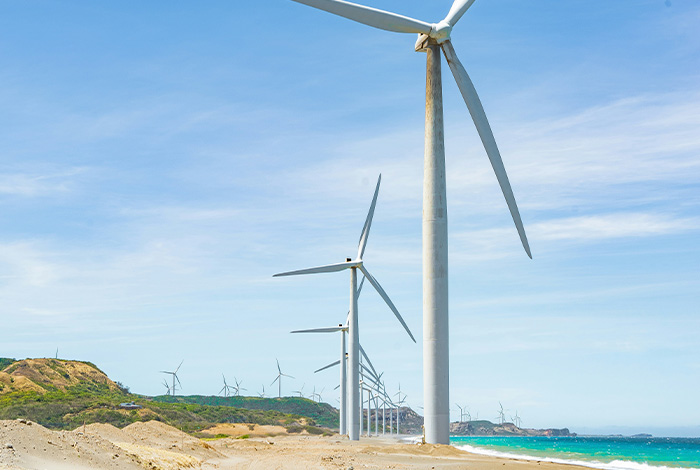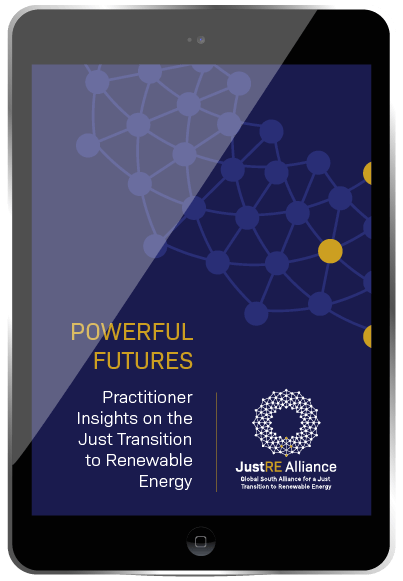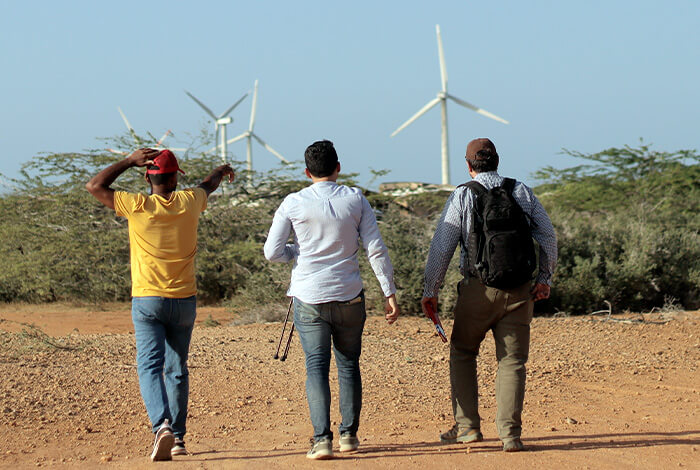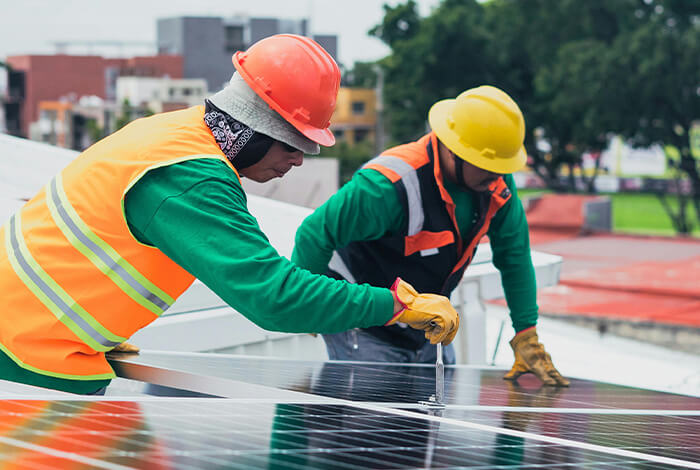Previous chapters presented many good practices and recommendations for the socially responsible implementation of utility-scale renewable energy. These actions cannot be undertaken alone. They require public institutions, the private sector, and communities, among other stakeholders, to align and collaborate behind a common vision.
The policies, accountability, and institutional capacities of all relevant actors are crucial enabling factors for achieving a just energy transition. Institutional capacity includes the quality of leadership and technical expertise, as well as the commitments, systems, and resources to set goals and implement actions to achieve them.[1]USAID, 2013, Institutional Capacity Assessment Tool: G2G Education Toolkit They are underpinned by legal and organisational frameworks and must effectively coordinate across stakeholders, manage competing interests, enforce regulations, innovate, and adapt to new challenges and opportunities.[2]World Bank Institute, 2011,Institutional Capacities and Their Contributing Characteristics for Institutional Diagnostics, Program Design and Results Management
Effective public institutions
Ultimately, the public sector sets the rules and determines a country’s decarbonisation paradigm and modes of implementation. Government agencies at all levels must, therefore, be adequately resourced and capacitated to guide the energy system transformations — and the knock-on effects on other parts of the economy and society — in a just manner. Creating a functional public institutional system that can guide action and demand accountability requires many key building blocks, including:
Policy and regulatory frameworks defining the objectives, means, and pace of the energy transition at national and subnational levels. Policies include subsidies, quality controls and penalties, and standards and guidelines to direct investment towards renewable energy, facilitate the provision of key factors of production (land, water, skilled labour, etc.), and mitigate social and environmental impacts.
Adequate decision-making power and human and financial resources are needed for the effective performance of institutions relevant to the sector. These include planning entities that translate overarching policy goals into specific spatial, sectoral, and resource allocation decisions. They also include accountability institutions, such as courts, ombudsmen, right-to-information structures, and human rights and anti-corruption organisations that monitor and enforce rules, ensuring compliance with social commitments by companies and the government.
Effective coordination mechanisms among different spheres and sectors of government are needed to mainstream environmental and socio economic policies and ensure national, regional, and local coherence. Mechanisms such as interministerial commissions and joint task forces can promote coordination and convene dialogue and knowledge transfer across agencies and jurisdictions. The ideal are co-ordination platforms that synchronise the contributions of other sectors as well as government – private sector, civil society, labour, academia.
Governments worldwide are challenged by the task of transforming national and regional energy systems in an ever-changing context of technological innovation, competing policy objectives, and economic interests.
A just transition would be greatly facilitated if national policies included justice as a central element of energy system transformation and corresponding metrics are embedded in laws, budgets, staffing choices, and capacity development. For example, auction eligibility mechanisms and awarding criteria can go beyond price and include social and economic development criteria such as supporting local workforce training programmes, strengthening local supply chains, evidence of social risks analysis, communication plans detailing methods for engaging with local actors, and monitoring and evaluation plans.
A socially responsible private sector
The RE industry is experiencing political and social challenges worldwide that are shaping how it does business. Unlike mining, oil, and gas, the renewable energy sector is still developing its social performance models and standards, including management systems for social risks and benefit sharing.
More work and effort are needed to establish corporate leadership structures and capacities to follow through. An important enabling factor for renewable energy transition is the maturity of the corporate practice of social performance. In this regard, capabilities tend to exist in isolation inside companies, on-site, or in small teams at corporate headquarters, with limited support, supervision, and resources.
The private sector needs to embrace a longer-term perspective. On average, power purchase agreements between renewable energy companies and off-takers (government, power utility, other private sector users) span 20 years, making RE projects long-term economic players in the communities in which they operate. Such decadal timeframes require producers to take a long-term view of their business environment in the interest of a just transition and their business viability.
The foundation of social responsibility is an intentional company culture and mindset with a holistic, long-term view of social performance. This approach includes comprehensive costing and performance incentives aligned with long-term social performance outcomes. The goal is to provide an economic rationale for systematically embedding community investment for socio economic development in business planning. Benefits include stable, thriving communities surrounding their plants, with a reduced probability and risk of protest action, and a greater probability of capacitated, reliable suppliers and staff.
Organisational incentives and reward systems are also important, whereby excellence in social performance is viewed as being as instrumental to success as engineering design or people and financial management. In a global industry where many of the customers of renewable energy companies are governments of emerging economies, an RE company’s ability and track record in not only providing clean, renewable energy, but doing so in a socio economically just manner, can become a competitive advantage and an industry differentiator.
Resilient communities
Socially just projects are co-designed and implemented with local communities. This approach depends on the capacity of communities to self-organise through authentically representative structures; absorb and manage large amounts of technical and legal information; and articulate and promote their collective interests. The social capital required for these tasks is substantial, and communities vary in terms of cohesion and forms of association. Communities are heterogeneous, and intersectional experiences of exclusion and discrimination exist within them. Even where national law mandates participatory planning and decision-making, the most marginalised may not have the time or perceived social standing to have equitable access to participation opportunities. Project consultation and management structures that don’t consider this reality can exacerbate vulnerabilities and stoke conflict.
When external stakeholders engage communities, it is important to avoid building parallel structures by first identifying, understanding, and appreciating local institutions and building upon these. Livelihood-based or faith-based groups and mutual savings and loan organisations are examples of community capacity for collective action, although these may need strengthening. A proper stakeholder mapping is the basis for tailored support consisting of several institutional elements in addition to technical support, including community development planning and investment management; project conceptualisation and management, discharging fiduciary responsibilities; and leadership skills, negotiation skills, and consensus building.
- [1] USAID, 2013, Institutional Capacity Assessment Tool: G2G Education Toolkit
- [2] World Bank Institute, 2011, Institutional Capacities and Their Contributing Characteristics for Institutional Diagnostics, Program Design and Results Management
- [3] Yumnaa Firfirey and Holle Wlokas, 2022, SA’s renewable energy projects need to strongly focus on social performance
- [4] Hanna Nel, 2020, Stakeholder engagement: asset-based community-led development (ABCD) versus the traditional needs-based approach to community development




